 Your new post is loading...
 Your new post is loading...
Sometimes it feels like the 1970s in the New York Times and Washington Post newsrooms: reporters battling each other to break news about scandals that threaten to envelop the White House and the presidency of Donald Trump. Only now their scoops come not in the morning edition but in a tweet or iPhone alert near the end of the day.
It is like old times in another way: both newspapers are getting readers to pay, offsetting advertising revenue relinquished to the internet. After years of giving away scoops for nothing online, and cutting staff, the Times and Post are focusing on subscriptions—mostly digital ones—which now rake in more money than ads do.
Their experiences offer lessons for the industry in America, although only a handful of newspapers have a chance at matching their success. A subscription-first approach relies on tapping a national and international market of hundreds of millions of educated English-language readers and converting a fraction of those into paying customers. With enough digital subscribers—Mark Thompson, chief executive of the New York Times, believes his newspaper can get to 10m, from 2m today—the subscriptions-first model could (in theory) generate more profits than business models dependent on print advertising used to.
Following last year’s presidential election, some major U.S. newspapers reported a sharp jump in digital subscriptions, giving a boost to their overall circulation totals. The newspaper industry as a whole, however, faced ongoing challenges in 2016, according to new Pew Research Center analysis. Yearly financial statements show that The New York Times added more than 500,000 digital subscriptions in 2016 – a 47% year-over-year rise. The Wall Street Journal added more than 150,000 digital subscriptions, a 23% rise, according to audited statements produced by Dow Jones. And the Chicago Tribune added about 100,000 in weekday digital circulation, a 76% year-over-year gain, according to its filings with the Alliance for Audited Media (AAM), an organization that verifies many daily newspapers’ circulation figures. But these gains did not translate into circulation growth for the industry overall. A Pew Research Center analysis of data from AAM shows that total weekday circulation for U.S. daily newspapers – both print and digital – fell 8% in 2016, marking the 28th consecutive year of declines. (Sunday circulation also fell 8%.) The overall decline includes a 10% decrease in weekday print circulation (9% for Sundays) and a 1% decline in weekday digital circulation (1% rise for Sundays). Total weekday circulation for U.S. daily newspapers fell to 35 million, while total Sunday circulation declined to 38 million – the lowest levels since 1945. (For more information on how these totals were calculated, see our fact sheet.)...
...For example, many evolving markets are seeing the “death of the middle.” The winners in these markets either offer the broadest breadth or the deepest depth. In evolving markets neither the broadest nor deepest is in trouble, but the middle market is withering. So it is logical to expect the big winners in the news business to either be the broadest or the deepest: To go maximum mass, or maximum specific.
With that as a backdrop, here are eight obvious business models for news now, and in the future. This isn’t a pick one model and stick with it prospect, news businesses should mix and match as relevant....
The Independent has unveiled a unique app based on reader feedback that combines the best of newspaper design with digital interactivity, making the most of tablets or smartphone technologytechnology
... Christian Broughton, Digital Editor at The Independent, said: “Most apps make do with a fairly static main edition. If they offer rolling news, it’s usually hidden away in a separate area. We’ve built breaking news into the very core of The Independent app. Our readers want and deserve breaking news, and they want multimedia too. But they also tell us that they like the feel and texture of a newspaper – nothing is simpler than flipping through pages. In geek-speak, that’s the ultimate intuitive UX! This app gives readers the best of both worlds.”
In October 2012, just 23 percent of Americans told Pew they read even one newspaper the previous day. So who in the world could possibly want or need unlimited access to 2,500 of them?
Alex Gruntsev, EVP and chief innovation officer of PressReader, made a compelling case in a phone interview that his “Netflix-style” subscription service — $29.95 per month — fills a niche in online news publishing by presenting news in a form that many automated aggregators cannot.
PressReader, formerly NewspaperDirect, has long provided PDF replicas mainly as a specialty business, but now it’s focusing on a wider consumer audience. “For just your morning routine, to open a PC was difficult,” Gruntsev said. “But in 2010, with the first iPad, the experience of reading dramatically changed, and it became way more appealing to the average reader.”
Now, PressReader users online or on tablets don’t just get static images of newspaper pages; they can jump into individual stories by clicking headlines. That launches PressReader’s SmartFlow mode, which allows for a seamless stream of stories scrolling left to right....
When we at HuffPost Media started talking about what 2013 was like in the media world, we kept coming back to one word: "insane." It's a sentiment that's almost always hyperbolic, but, in this case, we're sticking with it....
If the DOJ's operations showed how dangerous the White House apparently considered journalists to be, the publication of the Edward Snowden leaks by the Guardian, the Post, the Times and other outlets around the world—including, in one instance, The Huffington Post—provided a perfect example of why. People searching for a better case for the impact journalism can have would be hard-pressed to find one.
The revelations sparked international outcry and debate, turned journalist Glenn Greenwald into a global celebrity, and led to an eye-poppingly brutal response from the British government.The UK's hostility towards the Guardian was breathtaking, even to Americans who had just recently been condemning their own government's excesses. Prime Minister David Cameron's government dispatched civil servants to the paper's offices, where editors were told in no uncertain terms that they could either destroy the hard drives containing the Snowden documents or face crippling legal action. (The paper complied, since it had copies in other countries.)...
Newspaper reading habits have changed in the past few years…….. no one would argue that point. But it is often human nature to exaggerate the pace and degree of change. That of course is good if you need the push to re-invent yourself but less helpful if you are the one who has to manage the transition...
The question that still remains is why: Why would a technology entrepreneur invest in a stodgy media outlet in a declining industry? Was the motive for the move sentimental altruism or profit?
I think Henry Blodget at Business Insider hit the nail on the head in his piece when he said that:"Content and commerce companies have long dabbled with combining the two experiences, but no one has really nailed it. Given Amazon’s expertise in affiliate marketing and advertising, it’s not hard to imagine that the Washington Post could quickly become a laboratory for the next generation of integrated content and commerce."...
|
As President Donald Trump wages daily war against the press, millennials are subscribing to legacy news publications in record numbers—and at a growth rate, data suggests, far outpacing any other age group.
Since November's election, the New Yorker, for instance, has seen its number of new millennial subscribers more than double from over the same period a year earlier. According to the magazine's figures, it has 106 percent more new subscribers in the 18-34 age range and 129 percent more from 25-34.
The Atlantic has a similar story: since the election, its number of new subscribers aged 18-24 jumped 130 percent for print and digital subscriptions combined over the same period a year earlier, while 18-44 went up 70 percent.
Newspapers like The Washington Post and The New York Times typically do not share specific subscriber data, but according to a Post spokesperson, its subscriber growth rate is highest among millennials. A New York Times representative relayed that the paper was “seeing similar trends” in subscriptions and pointed to public data on digital traffic that showed its online reach among millennials to be up 9 percent from the same period a year ago.
Student editor's response: "I’m so scared and excited I could pee my pants."
Medium now has Substance. The popular publishing platform recently started hosting Substance, a new student publication at Mt. San Antonio College that doubles as a totally reinvented version of The Mountaineer campus newspaper.
It is the first college media outlet to operate primarily on Medium. Substance adviser and MSAC j-prof extraordinaire Toni Albertson describes the arrangement as nothing less than “the perfect merge of tech and college journalism.”
In a bravura announcement yesterday about the merger, Albertson explained that the impetus behind it was two-fold — mounting staff frustration at the print production routine and growing reader ennui toward the print edition....
Newspapers aren't losing as much money as a few years ago, thanks to a small uptick in reader payments from digital paywalls and higher circulation prices....
Revenue continued to fall at newspapers last year as modest increases in circulation revenue failed to offset bigger declines in advertising, according to the latest earnings reports from the nation’s large, publicly traded newspaper companies.
Analysts say the good news—if there is any—is that the revenue decline is not as steep as a few years ago, thanks to a small uptick in reader payments from digital paywalls and increased subscription prices.
“I wouldn’t call it a renaissance for newspapers, but I would definitely call it a stabilization,” said Gordon Borrell, a media analyst and CEO of Borrell Associates....
Editor’s note: The photo that appeared above this post has been removed at the request of the photographer. References to the photo in the story have been edited for clarity.
DETROIT, MI — As a major reorganization of the Cleveland Plain Dealer takes shape, veteran reporters are adjusting to “backpack journalism,” the division of staff into two companies, a looming move to a new office, and demands to post stories more quickly.
At the same time, they are memorializing their old newsroom in striking images that are circulating on social media and in email chains. One such photo was sent to CJR by a former Plain Dealer employee with the subject line, “This used to be a newsroom.”...
In 2010, Ethan Marcotte published "Responsive Web Design" on A List Apart, an influential Web-and design-focused blog. The article outlined many of the principles that define the modern Web...
... Three years later, the responsive Web design movement continues to grow. Many websites adapt to fit the screens on which they appear, and many sidestep the limitations of the shitty Web browsers through which they are accessed. Yet it seems that many news-focused websites have missed the trend, relying on mobile-specific websites even though Marcotte’s vision is well within their grasp.
This is hardly the biggest problem facing modern news sites. Declining ad revenues, concerns over the viability of “native ads,” and the increased prominence afforded to stories designed for virality instead of reality all take precedence over these websites’ presentation. But it does show just how slow the Web changes — and how frustrating reading news on the modern Web can be....
With all the talk of newspapers as dinosaurs, you might be surprised to know that they will close 2013 retaining their position as the leader among legacy platforms in share of digital advertising revenue, according to Borrell Associates’ annual review and forecast.
But as Borrell looks ahead, the industry’s digital ad prospects are alarmingly weak. By 2018, the consulting firm predicts, newspapers share of all digital advertising will fall by more than half — from 7.1 percent in 2013 to 3.3 percent in 2018.
To be clear, Borrell is NOT saying that the industry’s current digital ad revenues — about $3.5 billion for dailies, $5.8 billion for all newspapers — is going to fall by half. In fact, the firm forecasts growth, though at a modest pace of 1.8 percent a year...
Now that roughly a third of the nation’s newspapers are charging for access to their web and mobile content, the early evidence suggests that digital audiences aren’t nearly as enthusiastic about paying for news as publishers are about charging for it.
Although digital-only subscribers make up 37.6% of the total circulation of the Wall Street Journal and 34.4% of the total readership of the New York Times, the number of digital-only subscribers at Gannett, the largest publisher of general-interest newspapers in the land, is 2.2% of its average aggregate weekday circulation of 3 million subscribers...
|
 Your new post is loading...
Your new post is loading...
 Your new post is loading...
Your new post is loading...




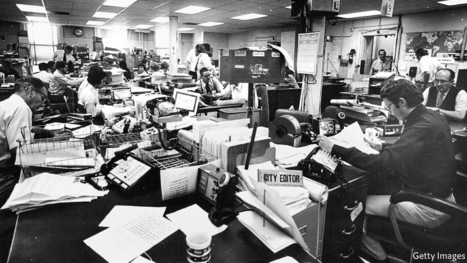

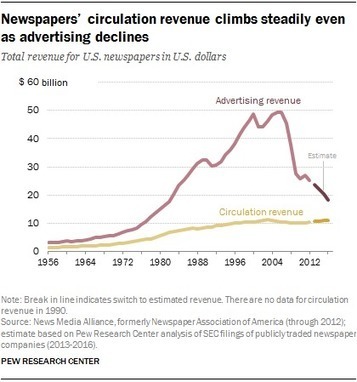



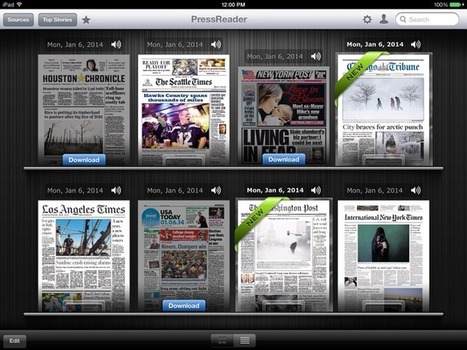
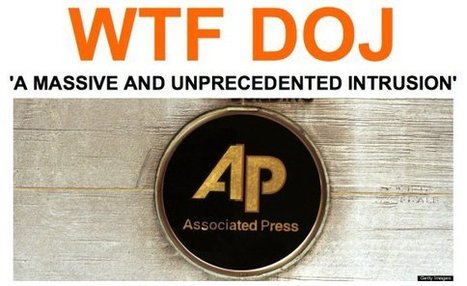


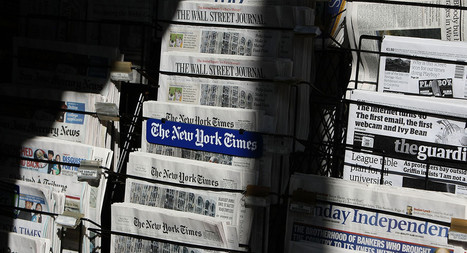

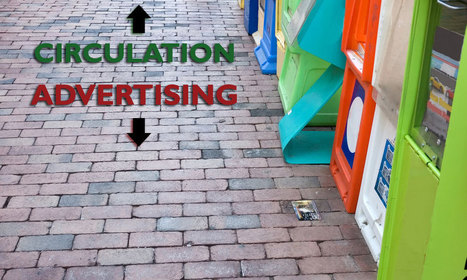


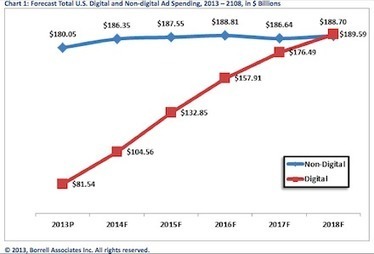






Are newspapers on the way to a comeback with digital subscriptions?